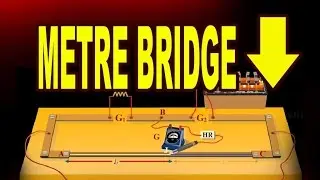What is DIFFRACTION GRATING? | Physics4Students
An arrangement consisting of a large number of equidistant parallel narrow slits of equal width separated by equal opaque portions is known as a diffraction grating. The plane transmission grating is a plane sheet of transparent material on which opaque rulings are made with a fine diamond pointer. The modern commercial form of grating contains about 6000 lines per centimeter. The rulings act as obstacles having a definite width ‘b’ and the transparent space between the rulings act as slit of width ‘a’. The combined width of a ruling and a slit is called grating element (e). Points on successive slits separated by a distance equal to the grating element are called corresponding points.
Theory
MN represents the section of a plane transmission grating. AB, CD, EF … are the successive slits of equal width a and BC, DE … be the rulings of equal width b.
Let e is equal to a plus b.
Let a plane wave front of monochromatic light of wave length lamda be incident normally on the grating. According to Huygen’s principle, the points in the slit AB, CD … etc act as a source of secondary wavelets which spread in all directions on the other side of the grating.
Let us consider the secondary diffracted wavelets, which makes an angle theta with the normal to the grating.
The path difference between the wavelets from one pair of corresponding points A and C is CG is equal to a plus b into sin theta. It will be seen that the path difference between waves from any pair of corresponding points is also a plus b into sin theta.
The point P one will be bright, when a plus b into sin theta is equal to m into lamda.
where m is equal to 0, 1, 2, 3
In the undiffracted position theta is equal to 0 and hence sin theta is equal to 0.
A plus b into sin theta is equal to 0, satisfies the condition for brightness for m is equal to 0.
Hence the wavelets proceeding in the direction of the incident rays will produce maximum intensity at the centre O of the screen. This is called zero order maximum or central maximum.
If a plus b into sin theta one is equal to lamda, the diffracted wavelets inclined at an angle theta one to the incident direction, reinforce and the first order maximum is obtained.
Similarly, for second order maximum, a plus b into sin theta two is equal to two pie.
On either side of central maxima different orders of secondary maxima are formed at the point P1, P2.
In general, a plus b into sin theta is equal to m lamda is the condition for maximum intensity, where m is an integer, the order of the maximum intensity.
Sin theta is equal to m lamda by a plus b or sin theta is equal to NM lamda.
where N is equal to one by a plus b , gives the number of grating element or number of lines per unit width of the grating.
When white light is used, the diffraction pattern consists of a white central maximum and on both sides continuous coloured images are formed.
In the undiffracted position, theta is equal to zero and hence sin theta is equal to zero. Therefore sin theta is equal to Nm lamda is satisfied for m is equal to zero for all values of lamda. Hence, at O all the wavelengths reinforce each other producing maximum intensity for all wave lengths. Hence an undispersed white image is obtained.
As theta increases, a plus b into sin theta first passes through lamda by two values for all colours from violet to red and hence darkness results.
As theta further increases, a plus b into sin theta passes through lamda values of all colours resulting in the formation of bright images producing a spectrum from violet to
red. These spectra are formed on either side of white, the central maximum.
![[FREE] Drake Type Beat -](https://images.videosashka.com/watch/8uxSc9htpIc)
![😍 [v5.5.0] 'New Season, New Dreams' Platinum OBB Patch 🎇 PES 2021 Mobile ✨ Exclusive Legendary Teams](https://images.videosashka.com/watch/c3D434ONCoU)

















